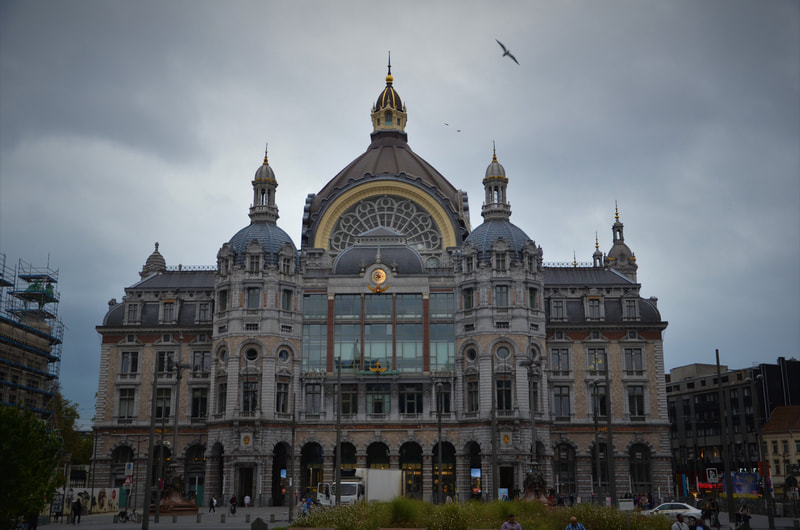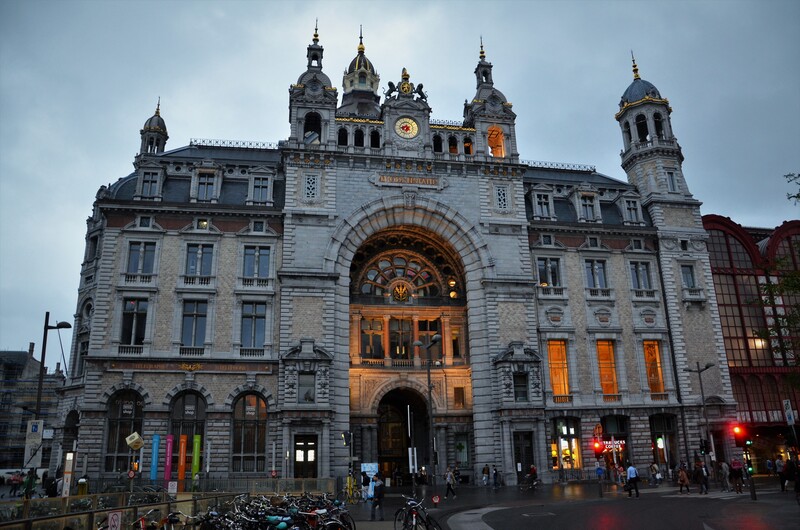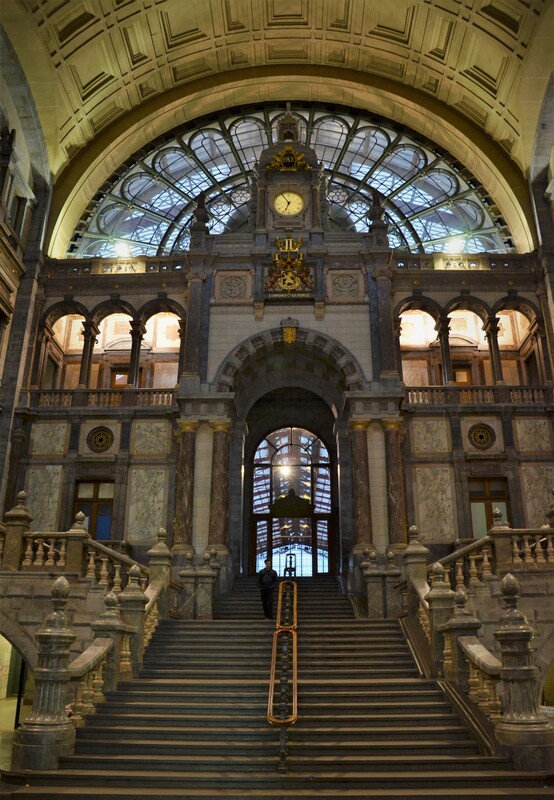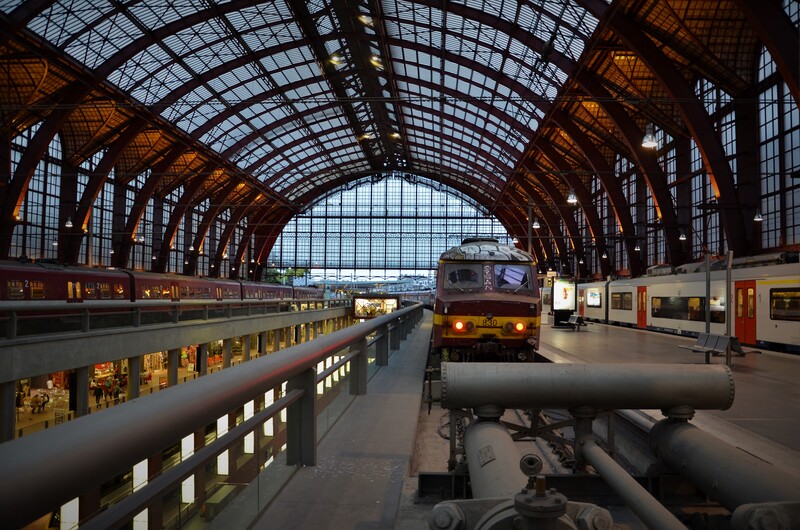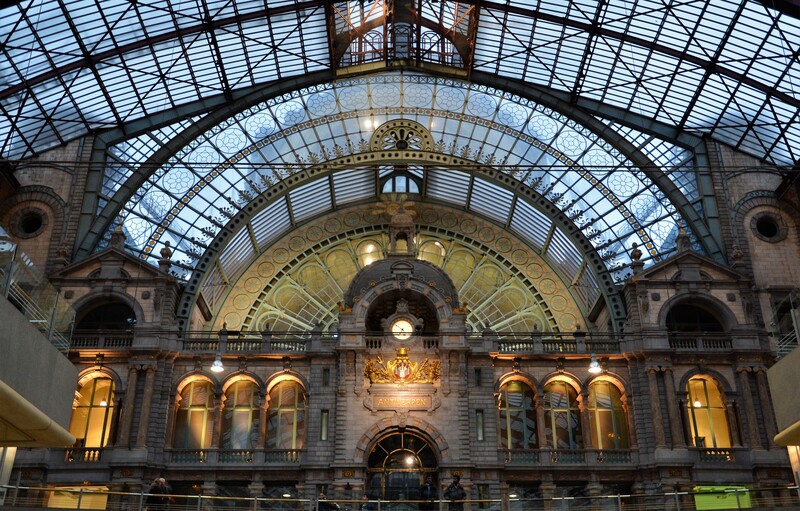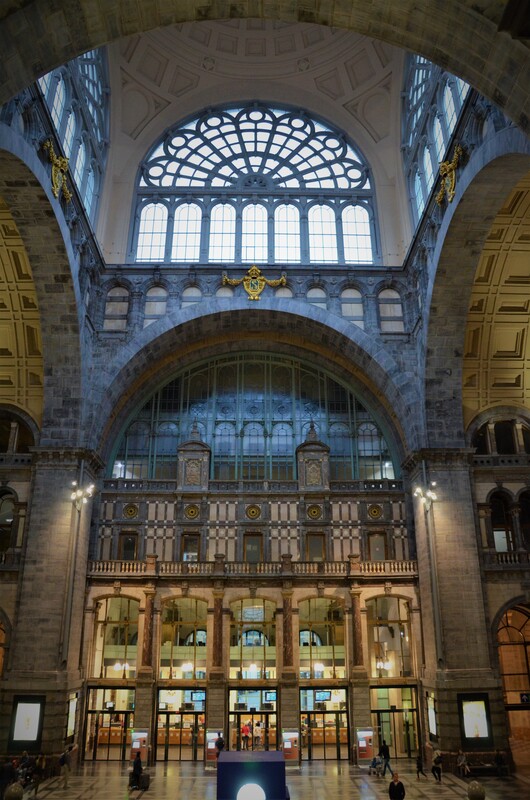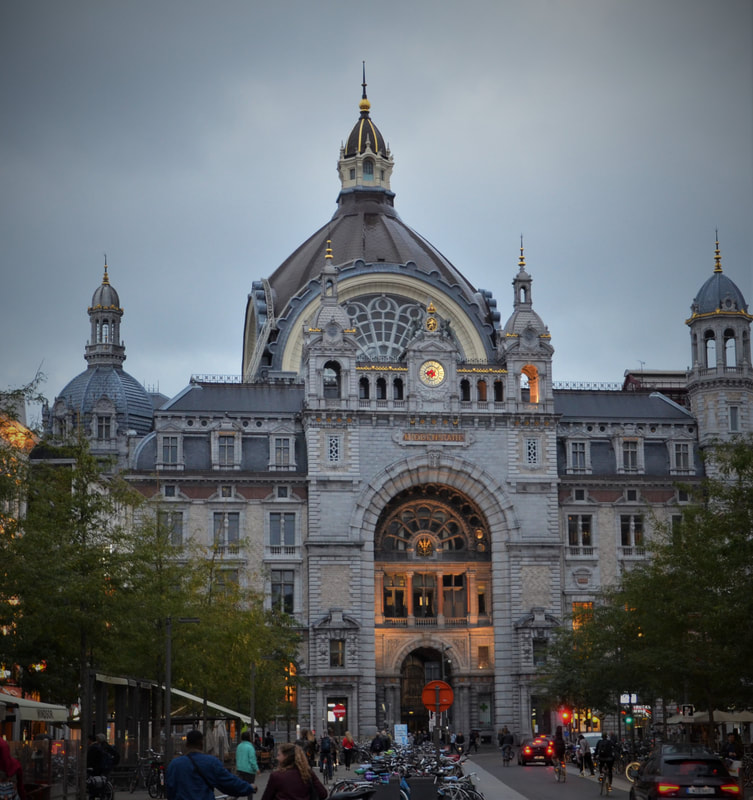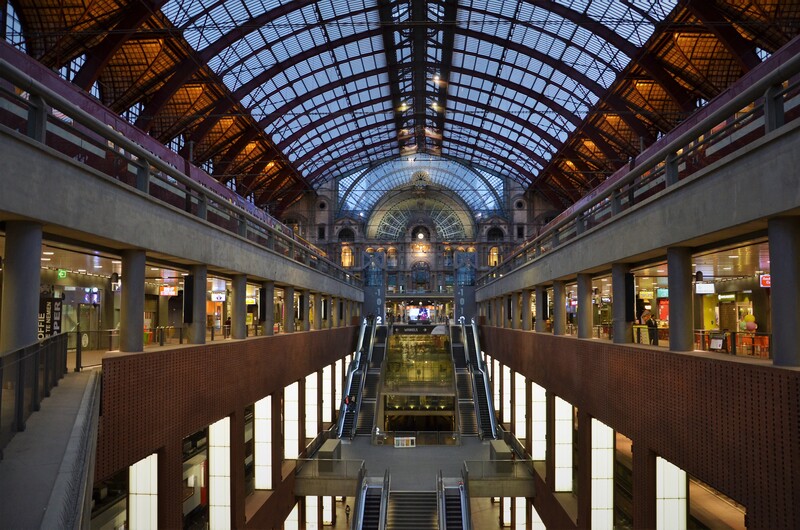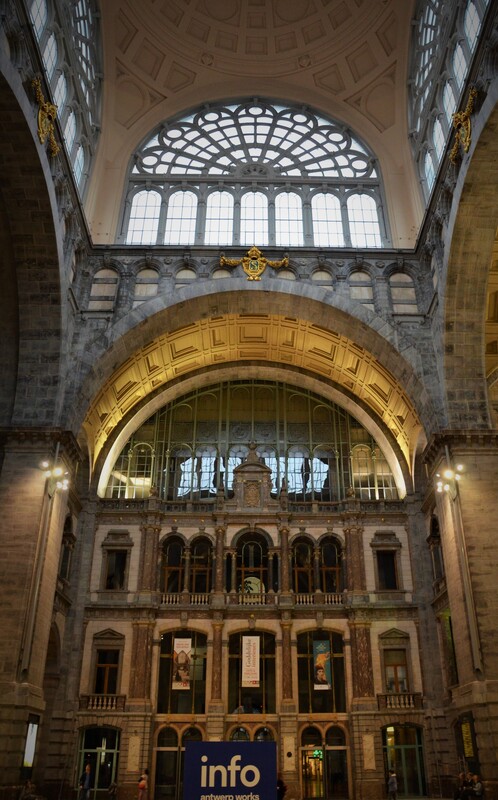Railway Cathedral
Dworzec Główny w Antwerpii, powszechnie uważany za najwspanialszy przykład architektury kolejowej w Belgii, powstawał w latach 1895-1905. Jego monumentalne wnętrze, będące mieszaniną wież, balkonów, szklanych kopuł i klasycznych kolumn, bardziej przypomina katedrę niż zwykły dworzec. Twórcą tego budynku był Louis Delacenserie, który wsławił się jako odnowiciel gotyckich budynków w Brugii. Ten ulubiony architekt króla Leopolda II (którego inicjały L odwrócone do siebie plecami umieszczono w różnych miejscach budynku) stworzył nowatorski projekt, czerpiąc inspirację z rzymskiego Panteonu oraz dworca kolejowego w szwajcarskiej Lucernie.
The station has been a protected monument since 1975
After ten years of construction, a beautiful main building was built, an eclectic mix of different architectural styles, and an impressive concourse with platforms, designed by Clément van Bogaert, built of steel and glass. It is impressive not only for its appearance, but also for its dimensions: 185 meters long, 66 meters wide and 44 meters high. Local architect Jan van Asparen designed the bridge, which runs parallel to the railway tracks. It is decorated with more than 200 small turrets.
During World War II, this magnificent station, called by the residents a railway cathedral, suffered significantly as a result of bombing. The most damage was done by the V-2 rocket, which exploded nearby, destroying the glass roof of the hall with platforms and violating its steel structure. In the year 1986 a thorough renovation of the roof and the facade of the station was carried out. After the replacement of steel parts, the structure was painted burgundy.
